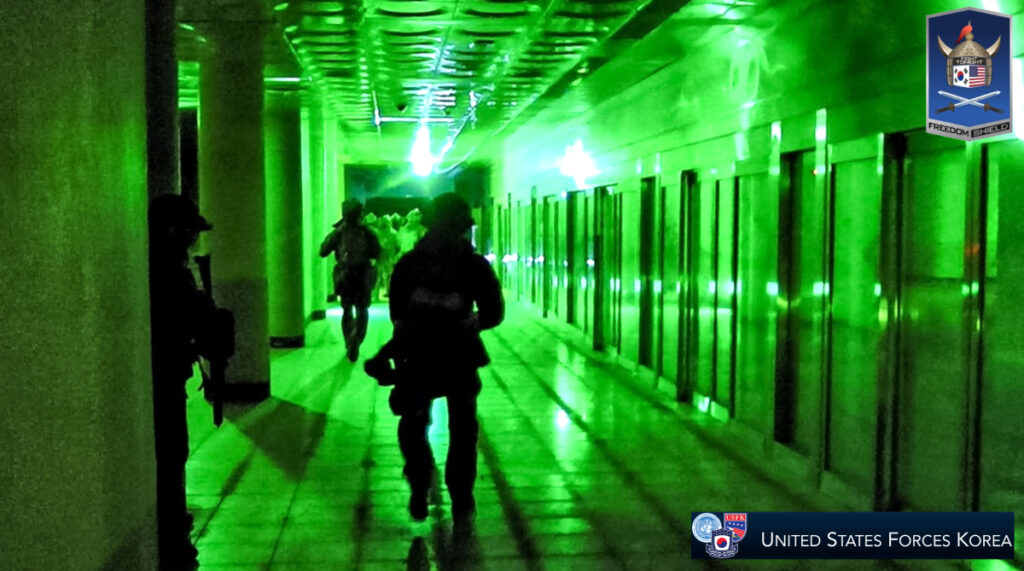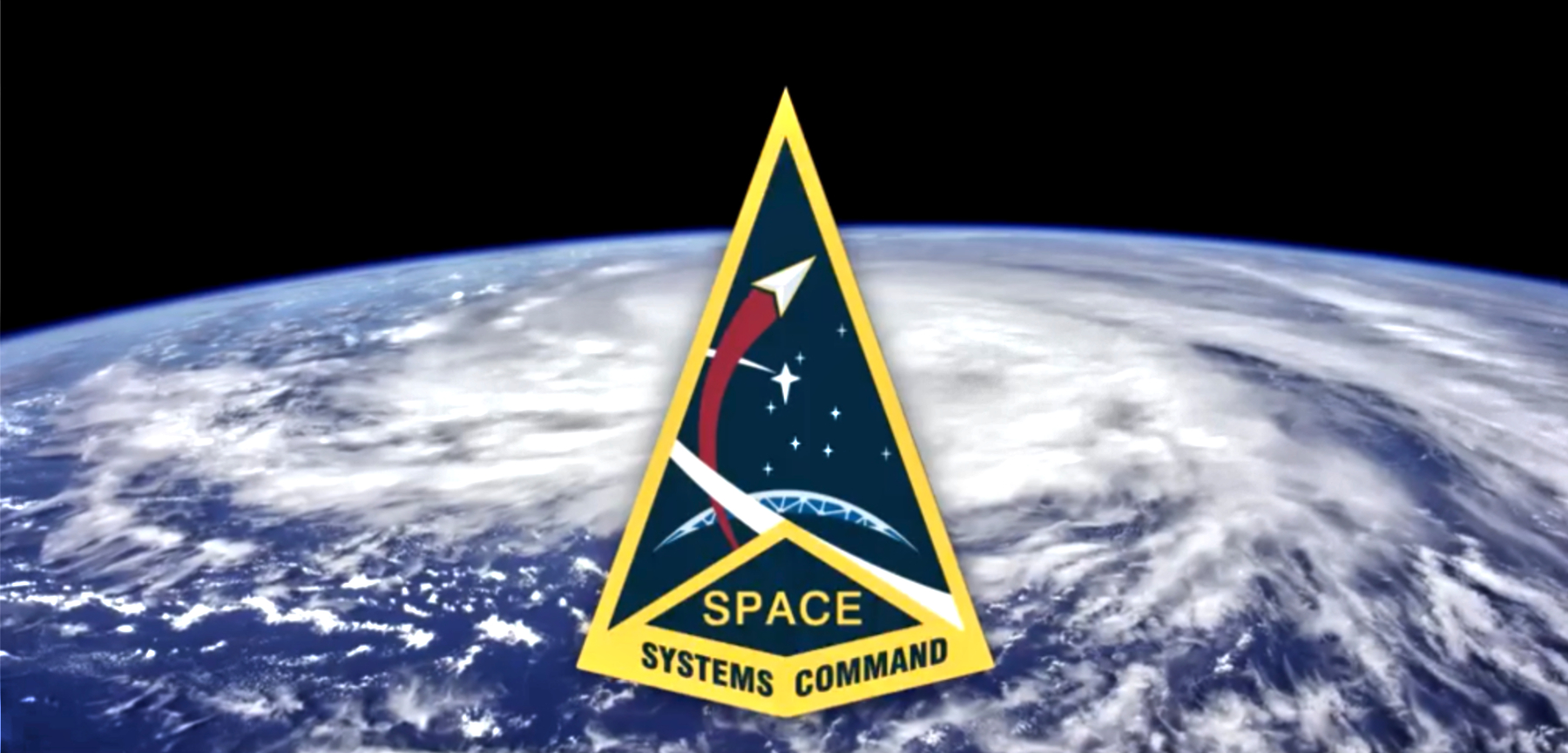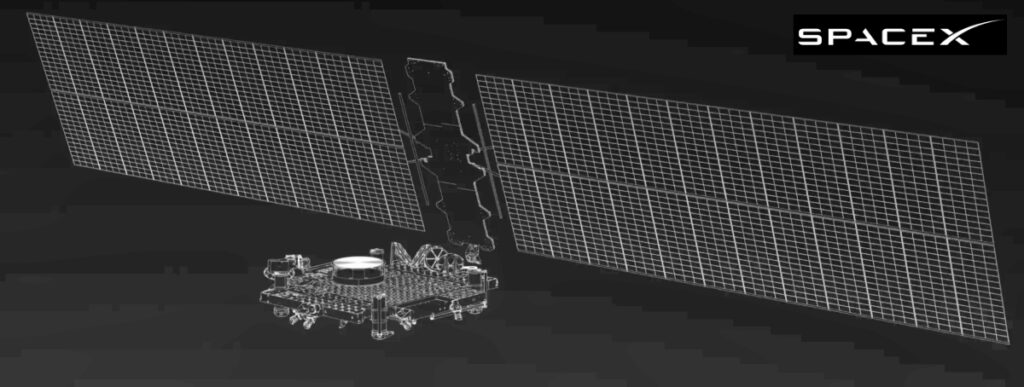
Above: A combined assault force of U.S. and Republic of Korea (ROK) special operations personnel conduct a direct action raid on a time sensitive target in an underground facility during a multi-day training event associated with exercise Freedom Shield 25 at a training site located east of Seoul earlier this month. The training event served as a capstone to two-weeks of various training that maintained the combined readiness and lethality of U.S. and ROK special operators. The routine training enables a peaceful and stable Indo-Pacific region through a strong deterrent force. (U.S. Army photo by Sgt. Taylor Zacherl)
U.S. Space Forces – Korea established its first forward operating Combined Joint Space Operations Center (CJSpOC) earlier this month, supporting exercise Freedom Shield 2025 and phase two of POLARIS HAMMER – KOREA.


Within the exercise environment, the CJSpOC facilitated the operational command and control of combined space forces in the Korean theater to achieve the combined forces commander’s objectives. It operated around-the-clock, enabling SPACEFOR-KOR, along with Space Operators from the Republic of Korea and additional partner nations, to continuously coordinate, plan, integrate, synchronize and execute space operations, providing tailored space effects on demand.
This milestone marks the first time a CJSpOC has been rapidly stood up with forces deployed directly to support a combined exercise, enhancing real-time space domain awareness and operational support, and it was accomplished through a mix of commercial and defense technology, demonstrating how the commercial space sector’s innovative capabilities provide pathways to enhance the resilience of Department of Defense space capabilities and strengthen deterrence.
Meanwhile, the U.S. Space Force Space Systems Command, based in Los Angeles, employed its Tactical Surveillance, Reconnaissance and Tracking Program (TacSRT) cell, using space assets to conduct ground reconnaissance and gather imagery. The TacSRT team provided warfighters with on-demand access to synthesized, publicly available information. Further bolstering CJSpOC’s capabilities, the 109th Hawaii Air National Guard contributed their space electronic support systems, Night Owl Lite, a geolocation system for signals intelligence, and Beast+, a system designed for analyzing jamming activities.

However, commercial capabilities do not replace classified military intelligence and space operations; instead they serve as an additional tool for SPACEFOR-KOR. Through these partnerships, SPACEFOR-KOR enhances its ability to protect and defend the space domain while maintaining space superiority alongside allies and partners.
FS25 is an annual exercise that aims to enhance the combined, joint, all-domain and interagency operating environment, thereby strengthening the alliance’s response capabilities. It is a defense-oriented exercise featuring live, virtual and field-based training that engages alliance forces and governmental agencies.
The CJSpOC integrated five capabilities coming together in time and space to include a SpaceX Starshield terminal, Joint Commercial Operations Cell, Tactical Surveillance, Reconnaissance and Tracking Cell, Night Owl Lite and Beast+. These capabilities, along with other USSF and multinational partner commercial assets, supported FS25 globally.

Provided by U.S. Pacific Fleet Command, a Starshield terminal, a larger version of Starlink and tailored for government use, delivered commercial internet via satellite broadband. This capability proved essential for the CJSpOC, whose multinational Joint Task Force-Space Defense Commercial Operations cell included participants from Australia, New Zealand, Germany, and the Republic of Korea, with additional teams operating globally.

Leveraging commercial ground assets, these teams focused on tracking space objects and providing early warnings of potential adversary actions in space, aligning with the DoD’s efforts to drive more effective integration of commercial space solutions into national security space architectures.
Everything is non-classified as we are using commercial internet to connect with commercial providers to provide products that we can then use for warfighter needs,” said Col. John Patrick, SPACEFOR-KOR commander. “By leveraging commercial we’re able to double, triple or even quadruple the number of space sensors, satellites, people and overall data we have at our disposal and pivot to new technologies in months and days versus years and tens of years.”
Because we exist at the non-classified level, it makes working with our multinational partners extremely easy,” said Kirsten Bingley, a U.S. contractor with the JCO. “We can bring them in on the ground level and show them everything we have without having to try to run through security barriers. It helps the alliance happen by giving us a place to talk space and start making those foundational understandings click together.”
